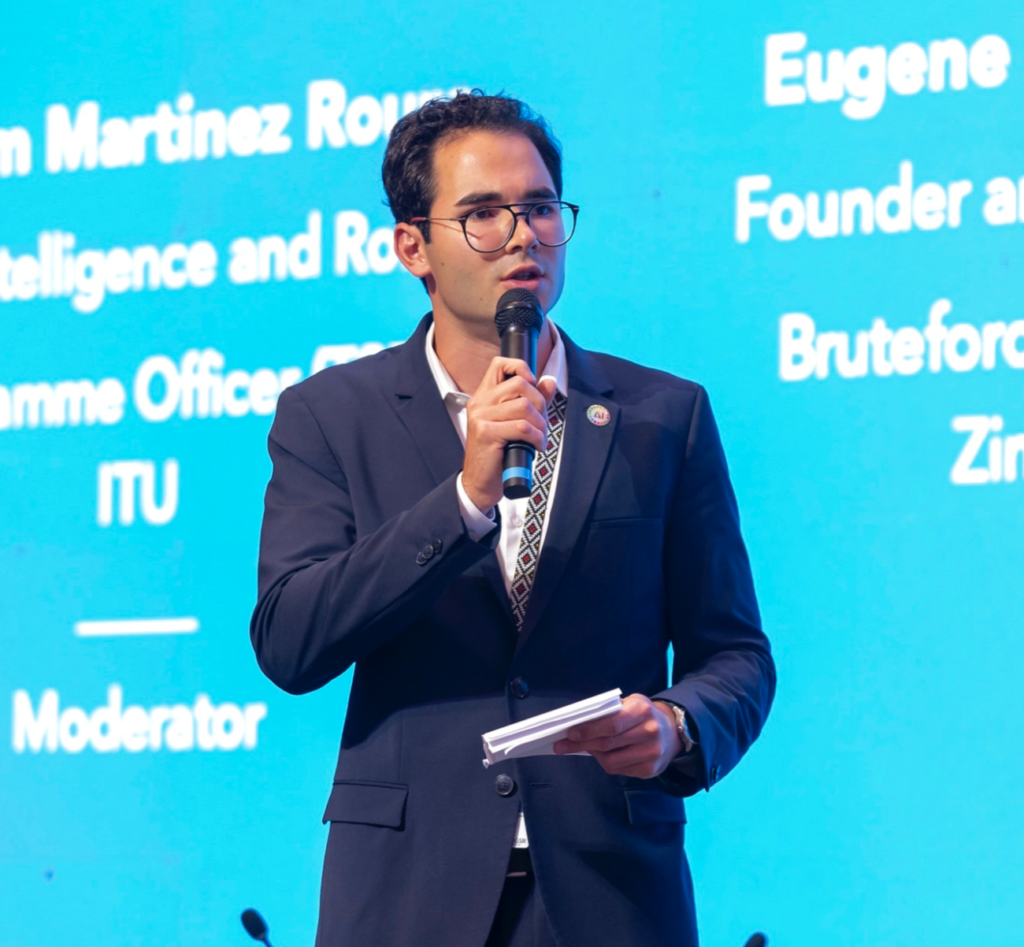
“It’s all the journey,” says International Telecommunications Union’s AI and Robotics Programme Officer Guillem Martinez Roura.
He’s responding to a question about what student teams, in ITU’s brand-new “Robotics For Good Youth Challenge“, will experience.
Earlier this year, ITU, the United Nations’ specialized agency for information and communication technologies, announced the first edition of their “Robotics for Good Youth Challenge”.
Offered through AI for Good, the United Nations’ leading digital platform for reaching practical artifical intelligence solutions to global problems, this new challenge breaks new ground in several areas.
The challenge
First of all, student teams must design and program autonomous robots. Once the competition begins, teams cannot touch their robots on the game boards.
Secondly, those game boards–and the game materials with which the robots will be operating–are also something the student teams need to create, pre-challenge.
In addition, teams are encouraged to create more than one robot, to deploy in the course of the challenge. (Here’s a link to Ai For Good’s handbook on this year’s challenge.)
And most importantly, while the challenge allows students to grow in their robotics skills, the goals reach far beyond the classroom and competition arenas.
Finalist teams will go to the 2025 AI For Good Global Summit, in Geneva, where they’ll compete with their robots, learn more about robotics and network with robotics professionals from around the world–sharing ideas that accelerate the UN’s Sustainable Development Goals.
How to participate
For this inaugural Robotics for Good Youth Challenge, U.S. teams will compete virtually. In other nations, including Spain, South Korea and Switzerland, in-person events will take place.
And while the deadline for hosting a national event has closed for the 2024-2025 season, Guillem says prospective organizers are encouraged to check the Robotics for Good Youth Challenge page for dates to sign up to organize a national event in 2025!
So, when can a U.S. team–or a student team in any other part of the world, for that matter–get involved? According to AI for Good’s timeline, team registrations open in November. Here’s the link for more information.
Guillem talked about his own journey with robotics, offered a preview of the Robotics for Good Youth Challenge and discussed his experiences creating educational robotic events, starting with his first nonprofit robotics educational challenge, ROBOCAT.
On this edition of Over Coffee® we cover:
- Guillem’s creative journey with robotics;
- The story of ROBOCAT, which Guillem co-founded when he was fifteen;
- What student teams’ robots must accomplish, for the Robotics for Good Youth Challenge;
- The areas in which this particular challenge requires some different skills from participants;
- What will be involved for the student teams, in creating the competition field and elements in addition to the robots;
- A closer look at the requirements for team participation;
- How teams can participate (and how U.S. teams can submit their participation videos);
- What Guillem enjoys most, about the competition;
- One of the imaginative solutions that wowed him, in a past ROBOCAT competition;
- A look at the categories for participants;
- How prospective organizers from nations that don’t yet have in-person events might get involved for the 2025-2026 season;
- How ITU is working to make sure more girls and young women get to participate;
- Guillem’s perspective on “mistakes” as they relate to the learning journey teams experience;
- Resources available for teams that would like to learn more about coding and robotics;
- How ITU is supporting qualifying teams for travel to Geneva in 2025;
- What those teams will experience;
- How to support the Robotics for Good Youth Challenge.
